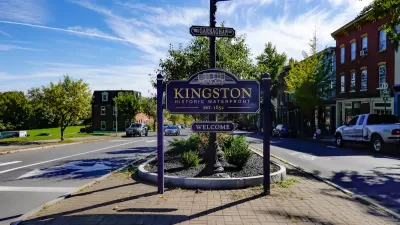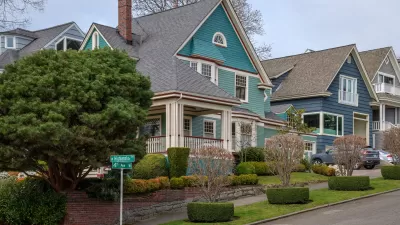Form-based codes voluntarily adopted by developers show how this kind of land-use regulation can offer high market adaptability while assuring a better public realm.
"Richardson, Texas, an affluent inner-ring suburb of Dallas, and home to many telecommunications corporations, wants to remain attractive to employers in coming decades," writes Robert Steuteville. "Key to that goal is becoming more walkable and connected to transit, qualities that many of today’s young and talented professionals are seeking. There are five Dallas Area Rapid Transit (DART) stations in Richardson, and unfortunately not one is in a walkable neighborhood. Such areas are in short supply in Richardson, which grew up entirely after World War II."
"But a 100-acre previously undeveloped parcel adjacent to one of the stations will establish a new pattern: The site was rezoned recently for 3,200 residential units and up to 6,000 jobs. State Farm Insurance Company, which could have located anywhere in the region but was looking for a walkable urban center, chose this site."
"As long as builders adhere to a new form-based code (FBC), no further public hearings are required. 'We eliminated the risk of NIMBYism for a theoretical maximum buildout within a wide range of uses,' says Scott Polikov of Vialta Group, LLC, A Gateway Planning Company. 'There’s nothing more market-responsive than that.'”
FULL STORY: Market-responsive form-based codes

Planetizen Federal Action Tracker
A weekly monitor of how Trump’s orders and actions are impacting planners and planning in America.

San Francisco's School District Spent $105M To Build Affordable Housing for Teachers — And That's Just the Beginning
SFUSD joins a growing list of school districts using their land holdings to address housing affordability challenges faced by their own employees.

The Tiny, Adorable $7,000 Car Turning Japan Onto EVs
The single seat Mibot charges from a regular plug as quickly as an iPad, and is about half the price of an average EV.

With Protected Lanes, 460% More People Commute by Bike
For those needing more ammo, more data proving what we already knew is here.

In More Metros Than You’d Think, Suburbs are Now More Expensive Than the City
If you're moving to the burbs to save on square footage, data shows you should think again.

The States Losing Rural Delivery Rooms at an Alarming Pace
In some states, as few as 9% of rural hospitals still deliver babies. As a result, rising pre-term births, no adequate pre-term care and "harrowing" close calls are a growing reality.
Urban Design for Planners 1: Software Tools
This six-course series explores essential urban design concepts using open source software and equips planners with the tools they need to participate fully in the urban design process.
Planning for Universal Design
Learn the tools for implementing Universal Design in planning regulations.
Smith Gee Studio
City of Charlotte
City of Camden Redevelopment Agency
City of Astoria
Transportation Research & Education Center (TREC) at Portland State University
US High Speed Rail Association
City of Camden Redevelopment Agency
Municipality of Princeton (NJ)





























